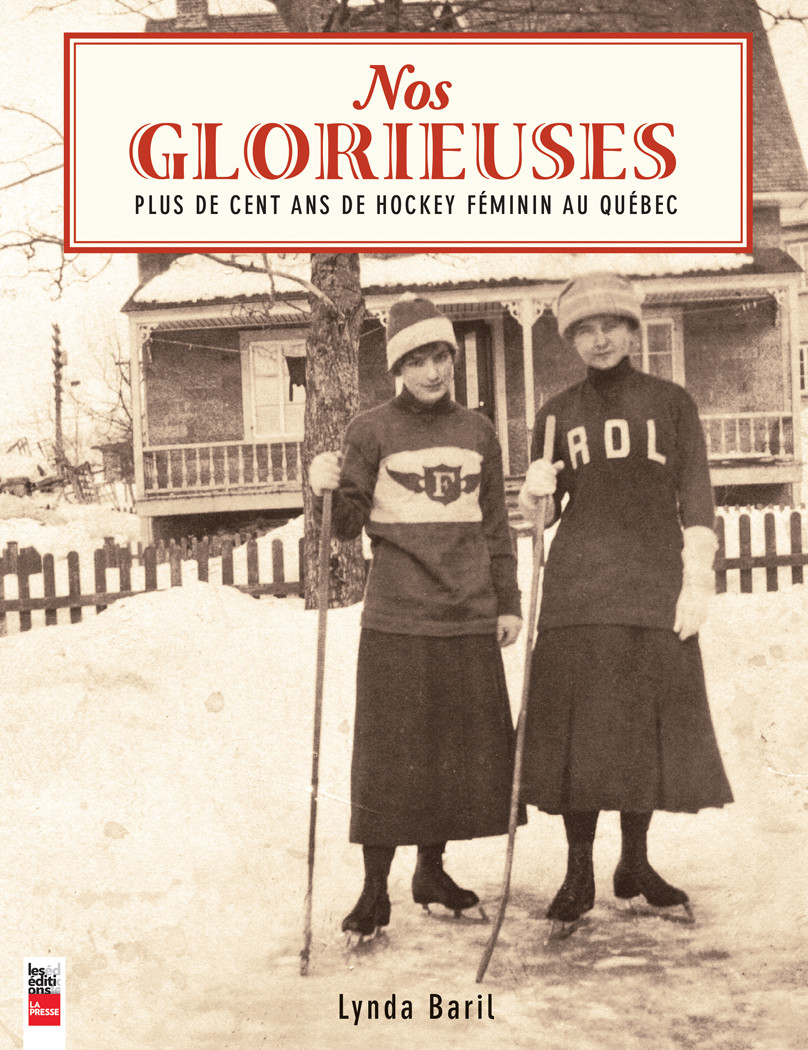A Glorious Past
Lynda Baril’s Nos Glorieuses Examines the History of Women’s Hockey
Millions of Canadians witnessed Canada’s women’s national hockey team’s comeback win in last month’s Sochi Winter Olympic gold medal game.
Some of those might know that the game marked the fourth straight time the team won gold in the Winter Olympics since the event was inaugurated in 1998.
But few are aware that women’s hockey’s glorified past dates back much further than that.
Author and La Presse journalist Lynda Baril is hoping to shed some light on that past with her new book Nos Glorieuses, released in November.
“I started thinking about [the book] about six, seven years ago after doing a miniseries on Radio-Canada about hockey’s history,” said Baril.
“[That’s when] I realized that there hadn’t been a lot of talk about women’s hockey, especially in Quebec.”
The book covers the history of the sport in Canada in depth from its very beginnings, detailing 100 years of women’s hockey.
Baril also inserted over 200 photos, illustrations and period documents after searching through heaps of archival material.
“I was doing a lot of digging through many old newspapers, magazine clippings and covers, even Eaton’s catalogues,” said Baril.
“But one thing is for sure, I didn’t want to just tell the people the story, I wanted them to see it.”
Baril also says that doing the miniseries was an eye-opener for her.
“It was really the first time I had seen women in long skirts and hockey sticks at the beginning of the century,” said Baril.
“I then asked myself how come I’ve never seen this.”
She then divided a lot of her free time to start searching for more and more photos, and people willing to help share her story.
A part of that story mentions how, while Canada’s men were off serving our country during World War I, the women took to the ice and put on games for crowds upwards of 3,000 people.
“It’s kind of funny how not many people knew about that,” said Concordia Stingers women’s hockey head coach Les Lawton.

“In Montreal and Toronto, women’s hockey almost made the men’s leagues disappear.”
Lawton himself just finished his 33rd season as head coach of the Stingers—a testament to the longevity of women’s hockey in Canada.
“Anybody involved in the women’s hockey program knows about the true history and that’s super important,” said Lawton.
“Just look at us at Concordia, we’ve had a women’s hockey program here since 1968.”
You were hard-pressed to find a francophone playing before that time, however.
“Back in the beginning in the 1910s, ‘20s and ‘30s, women in Quebec along the French side were commonly discouraged from playing hockey,” said Baril.
“It wasn’t an image we often put together.”
Baril went on to say that women’s hockey has come a long way since those days, but was quick to mention that the sport is still facing challenges today.
“[Media and journalists] like to point out that it isn’t really on par with the men’s level because the competition is so sparse,” said Baril.
“They think it’s only the Canadians and Americans and the rest are just for show. That’s why Sochi was different, in a positive way.”

Four years ago, in the Winter Olympics in Vancouver, Canada’s women’s team’s road to gold was an easy one as it defeated its three group-round matchups by a combined score of 41-2 and shut out Finland 5-0 in the semis before beating the Americans 2-0 in the final.
This past Olympics gave the Canadians a much stronger test, as the women’s team won its three group-stage games only by a combined score of 11-2 before narrowly defeating Switzerland 3-1 in the semifinal en route to its come-from-behind 3-2 win against the U.S. in the final. The Swiss went on to win bronze.
“In men’s hockey it took Switzerland 82 years for them to beat the Canadians,” said Baril.
“I sincerely doubt it’ll take that long for the women.”
In the meantime, Baril hopes her book, which has already sold several thousand copies, helps to get the true history of women’s hockey out for people to learn.
“Not everyone will buy the book to read the whole thing,” said Baril.
“But they will definitely enjoy looking at all the pictures, and getting a quick history lesson.”


_600_832_s.png)

_600_375_90_s_c1.jpg)
_600_375_90_s_c1.jpg)
_600_375_90_s_c1.jpg)
_600_375_90_s_c1.jpg)